 By Staff By Staff
December 4th, 2019
BURLINGTON, ON
 What did you buy on Black Friday? What did you buy on Black Friday?
Did you buy anything on Cyber Monday?
A friend bought a lovely little item that can be given as a small token of appreciation to someone who has a sense of humour.
She got it in a shop in Elora.
What do you think? Does it speak for you?

 By Ray Rivers By Ray Rivers
December 4th, 2019
BURLINGTON, ON
Parliament and the Government of Canada are committed to the principle of making equalization payments to ensure that provincial governments have sufficient revenues to provide reasonably comparable levels of public services and reasonably comparable levels of taxation. (Constitution Act of 1982)
The communique read ‘Premiers United” but it was hardly a love-in when the provincial leaders of this great country got together at the invitation of Ontario premier Ford this week. Mr. Ford apparently had an epiphany as he watched the federal Tory leader, Mr. Scheer, fall on his own dagger. It is a different dagger than the one Mr. Ford’s provincial predecessor fell on. But there is an inscription carved in a snow bank at the back of Brampton’s city hall – Et tu Brute?
Indeed, given the circumstances of Mr. Ford’s meteoric rise to leader of the Ontario Conservatives, there may soon be an opportunity for the job he really covets.
 Which people: Ontario or the whole country? So no longer the national disrupter, that role having been usurped by messers Kenney, Moe and Pallister, Ford has donned a new persona. He now fancies himself the national bridge builder, not literally of course. Even Ford gets that being nasty and confrontational, the way Mr. Scheer was during the last campaign, is a proven recipe for failure. So today it’s ‘Mr. Nice Guy’ and tomorrow it’s the yellow brick road to leadership of the federal Tories.
It may not be just personal ambition. After all, national conciliator is a role which Ontario has played since confederation, most recently with Robarts, Davis and Peterson, leading the we’re-all-in-this-together charge. And Trudeau, having lost most of his battalion of liberally-minded provincial leaders since his 2015 election triumph, is hardly in a position to refuse Ford’s help.
 This is what “Kiss and Make up” looks like. So his kiss and make-up encounter with Mr. Trudeau under his belt, Ford clearly is out to charm the other provincial and territorial leaders, to get them to put aside the differences among them and to help him unify the nation. And nothing can unify a gaggle of subnational leaders more than a chance to pile on with grievances about the federal government. That is providing they can avoid the other big issues which might pit one premier against another.
So there was nothing in the communique about Quebec’s controversial secularism Bill 21, which had provoked a war of words… and more… between Quebec and the high and mighty Manitoba premier, who somehow thinks it is his business to intervene in an internal Quebec provincial matter.
Nor was there any mention of Alberta and Saskatchewan potentially ramming pipelines full of diluted bitumen through Quebec and B.C. to the coasts to pacify Alberta, there were a few statements about resource development with some less than subtle references to Canada’s environment assessment law. And despite Quebec Premier Legault’s objection to the increased production of what he calls ‘dirty oil’, he would sign onto anything that limited and constrained federal powers.
 Ontario Premier Doug Ford There was no mention of the carbon tax, despite four provinces taking the federal government to various courts, including the Supreme Court, over that policy. And neither was there anything but a passing comment around climate change, the most important national issue which faced voters in the last federal election. It appears nobody wanted to provoke a stand off between the climate deniers and delayers and the other folks who actually understand the issue.
And although Albertans have been recently venting about the unfairness of Canada’s federal-provincial equalization program, there is no inkling that the premiers even discussed it. They did spend some quality time trying to fine tune the Fiscal Stabilization Program, an equally complicated multi-year mechanism intended to help provinces through rough economic patches. And as one would expect from kids in a candy store their fix was to simply demand more. Like equalization, this is federal money – somebody else is paying, right?
Equalization is one of the glues that keeps this nation together. It’s been a fundamental part of Canada since confederation though it was only formalized in 1957. And while Pierre Trudeau may have held the pen as it was being written into Canada’s 1982 constitution, equalization was initiated, formalized and most recently amended all by Conservative governments. And those last amendments which, in fact, expanded the benefits of the program to Quebecers were penned by Stephen Harper, with Jason Kenney at the Cabinet table,.
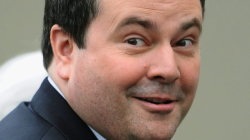 Jason Kenney So for Jason Kenney now to be talking of seriously downgrading or even ending equalization is two-faced hypocrisy. Of course we know it was a baseless threat to Quebec over a pipeline which will never be built. But it was also politics – what better way to fire up Albertan voters, using exactly the same kind of tactic Quebec separatists have employed for decades.
Alberta is by far the wealthiest province with the greatest fiscal capacity in the country and also the one with the lowest taxes. Per capita income is 30 to 40% greater than the Canadian average. And that has hardly changed even after the oil patch experienced its big price shock a couple of years ago.
And as for Quebec, the lion’s share of the equalization budget does go that province, but given its population Quebecers receive the smallest share per capita among all the have-not provinces. Albertans may look at Quebec with some envy though. After all, it has balanced its budget. That has to do with its fiscal management and its degree of taxation, almost twice as much as Albertans pay. And unlike Alberta, the province also manages both a child care and pharmacare program.
Quebec’s pharmacare program, implemented in 1997, is a two-tiered system, similar to Ontario’s OHIP+ (youth pharmacare) – except it applies to all ages of Quebecers. It has received accolades from the Fraser institute claiming it “offers better drug coverage and quicker approval for new drugs coming to market than the rest of Canada.” In fact the plan covers twice as many pharmaceuticals as Ontario does.
But drug costs are higher and rising rapidly, particularly for the public tier of the ledger. Canada’s expert panel on pharmacare rejected the Quebec model, recommending a single payer system as a more efficient (lower cost) and sustainable option. In any case, some premiers, such as Manitoba’s Pallister, aren’t willing to even entertain the notion of a universal pharmacare program.
Pallister, much like Ontario’s Ford, has an intractable problem with hallway medicine in his province’s hospital wards. And like Ford, his prescription is turbulent restructuring, cost-cutting and eliminating health care jobs. So Pallister, like Ford is looking for more federal money to get him out of the pickle jar in which he has placed himself. That is a negotiating tactic – he’ll not agree to pharmacare unless it comes with a Santa-sled of new cash.
 NDP leader Jagmeet Singh Quebec, and possibly Alberta, can be expected to opt out of any national pharmacare program, regardless that the alternative would be more costly. So getting to a universal pharmacare program across the country may be as much of a pipe dream as Mr. Kenney piping his province’s diluted bitumen across la belle province. Still pharmacare was at least given honourable mention in the final meeting communique. And it is the gun which Mr. Singh is holding to the prime minister’s head.
The next step in Mr. Ford’s unifying process involves the premiers meeting with Mr. Trudeau. But nobody should hold their breath waiting for any kind of unity coming out of that meeting either. If you do you might end up in one of Mr. Pallister’s hospital hallways.
 Ray Rivers writes regularly on both federal and provincial politics, applying his more than 25 years as a federal bureaucrat to his thinking. Rivers was once a candidate for provincial office in Burlington. He was the founder of the Burlington citizen committee on sustainability at a time when climate warming was a hotly debated subject. Ray has a post graduate degree in economics that he earned at the University of Ottawa. Tweet @rayzrivers Ray Rivers writes regularly on both federal and provincial politics, applying his more than 25 years as a federal bureaucrat to his thinking. Rivers was once a candidate for provincial office in Burlington. He was the founder of the Burlington citizen committee on sustainability at a time when climate warming was a hotly debated subject. Ray has a post graduate degree in economics that he earned at the University of Ottawa. Tweet @rayzrivers
Background links:
Premiers’ Meeting – Fiscal Stabilization – Alberta Economic Stats –
More Economics – Equalization – Kenney Equalization – Quebec Drug Plan –

 By Pepper Parr By Pepper Parr
December 4th, 2019
BURLINGTON, ON
Unless there is a massive shift in the thinking of this council, Burlington is going to have a private tree bylaw – which is going to take some time to get used to.
City council has been at this issue for more than nine years: there was a pilot program in the Roseland community that was iffy in term of results.
Everyone will say they love trees – but when they become a nuisance, they want to be able to cut t hem down. This city council is saying that the Climate Change issues are such that we have to save every tree we can.
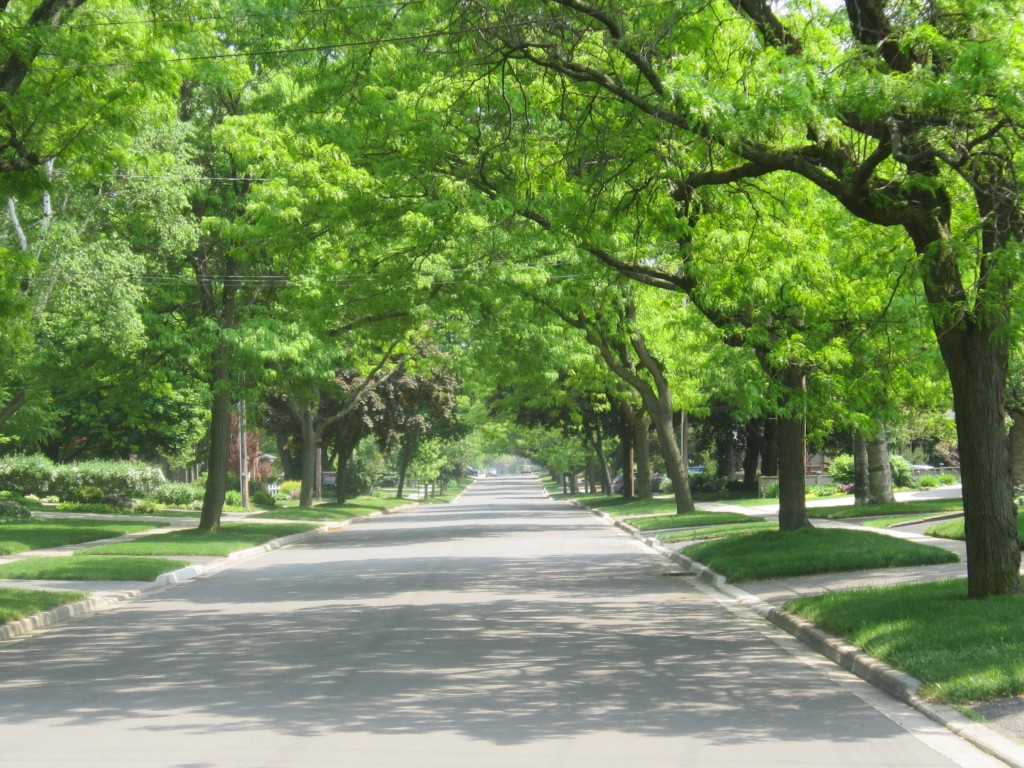 This is the Burlington everyone wants; keeping this canopy means we stop cutting down trees unless absolutely necessary. In comments she made just before the vote to recommend the bylaw was passed Ward 2 Councillor Lisa Kearns said:
Either were a Climate forward Council, or we’re not;
either we commit to our business plan, or we don’t;
either we look to the priorities of the next generation or we don’t;
either we empower the best staff doing their best work or we don’t;
either we invest or we don’t;
either you’re on the right side of history. Or you’re not;
I am, and I am supporting Burlington’s city wide private tree bylaw.
Her views reflected the mood and determination of this council.
There were delegations that believed the city did not have the right to do what they were setting out to do. Some impressive arguments were put forward telling us more than we ever wanted to know about the British North America Act and “letters patent”.
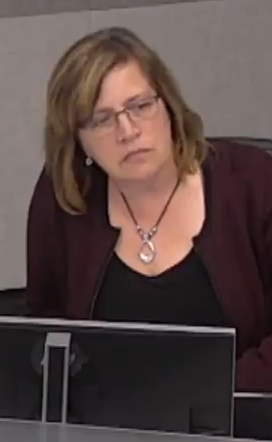 Ward 4 Councillor Shawna Stolte Ward 4 Councillor Shawna Stolte, who moved the motion said:
This debate has been going on before Burlington City Council for almost a decade now…
We’ve all heard the arguments from one extreme to the other…including delegates last evening who presented legal arguments cautioning Council against supporting what they claimed to be an illegal bylaw.
Following Committee last night I did some research and would like to take a moment and share the following in regard to the legislation behind Tree By-laws:
In 1946, the Trees Conservation Act was passed in an attempt to protect woodlands from clearing and overcutting.
Under the Municipal Act in 1994, all local municipalities with a population of greater than 10,000 could regulate tree cutting.
To simplify the process and authority for Tree By-Laws, provisions were consolidated into the new Municipal Act (2001) which took effect on January 1, 2003. Upper tier, single tier and lower tier municipalities could now all pass Tree By-laws under the new Municipal Act, 2001.
Consolidation of the tree cutting provisions into the new Municipal Act, 2001 enabled:
All local municipalities and upper/single tier municipalities to pass and enforce by-laws. They may also delegate these powers up or down.
Upper tier municipalities can regulate or prohibit the cutting of trees in woodlands designated in the by-law that are 1 ha or greater.
Lower tier municipalities can regulate or prohibit the cutting of individual trees in areas up to 1 ha in size.
The Municipal Act enables municipalities to „prohibit‟ the destruction or injuring of trees where the previous Forestry Act could only „regulate‟ the destruction or injuring of trees.
By-laws enacted under the Municipal Act, 2001 can require a permit for the destruction or injuring of trees.
The permit may impose conditions including how trees are cut and qualifications of persons authorized to cut.
The changes that came with the Municipal Act have empowered municipalities more than ever before.
In the past 10 years almost all upper tier Tree By-laws have been updated incorporating some new considerations for good forestry practices and requiring applications for permits instead of just notices of intent.
The Municipal Act states that:
“A local municipality may prohibit or regulate the destruction or injuring of trees.”
and
“An upper tier municipality may prohibit or regulate the destruction or injuring of trees in woodlands…”.
The Act also states that:
“…a municipality shall have regard to good forestry practices…”
and
“…a municipality may… require a permit …impose conditions to a permit…including… the manner in which destruction occurs and the qualifications of persons authorized to injure or destroy trees.”
Also important to note is that delegation can occur up from the lower tier municipality to the upper tier municipality and also down from the upper tier municipality to the lower tier municipality. Single tier municipalities have jurisdiction over both trees and woodlands.
Currently, there are at least 23 upper tier municipalities (counties and regional governments) with by- laws and 35 lower and single tier municipalities with Tree By-laws in Ontario.
Clearly many other communities have taken the progressive action of creating a Climate Action Plan and protecting their green infrastructure by way of a Private Tree Bylaw, and it is time for Burlington to get off the fence and take concrete steps to doing the same.
We cannot dispute that our Urban Tree Canopy is in a state of crisis…Conservation Halton has rated our downtown forest health as “poor” and its getting worse.
The reality is we are losing thousands of trees and it does not matter whether these losses are from disease or development, we cannot afford to lose anymore.
We need to do everything possible to protect AND enhance our tree canopy.
Is this Private Tree Bylaw the only answer? NO, of course not.
It is but one important tool in our Urban Forest Management Toolbox.
This is not about picking just one tool to use, it’s not a matter of investing in tree protection OR tree planting but exploring and implementing as many tools as we possibly can.
For my colleague who trusts numbers more than words I will offer a simple equation…
25 small trees planted minus 25 mature trees taken down leaves us with just 25 small trees.
Whereas…25 small trees planted plus 25 trees protected leaves us with a healthy forest of 50 trees.
The best way to preserve and grow our canopy is through protection AND planting and I believe that everyone on this Council supports robust tree planting and looks forward to implementing concrete tree planting initiatives throughout the City. The hope is that residents will replace trees on their property as per the program and NOT opt to pay any cash-in-lieu…but giving residents a choice, the funds that are received as cash-in-lieu will continue to help to enhance the canopy.
To supplement a strong tree planting initiative our Forestry Dept. has come up with a fair and reasonable Bylaw that also protects our existing canopy and I hope that this Council, in light of operationalizing our Climate Action Plan, is willing to support this Bylaw that protects and preserves our trees.
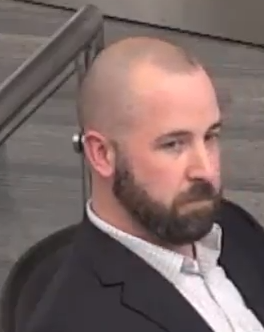 Steve Robertson The proposed bylaw is complex. The Forestry department is going to add staff whose prime role is to educate and explain the bylaw. Steve Robertson, manager of forestry said the job is to help people work with the bylaw and to be educators and not draconian enforcers.
This is not going to be a smooth process; if the climate change people are right it is a necessary process.

 By Pepper Parr By Pepper Parr
December 3rd, 2019
BURLINGTON, ON
It was a year ago this evening – the new city council was sworn in.
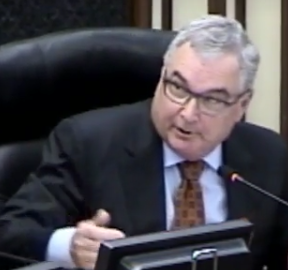 City Manager James Ridge is shown the exit door. The next day the Mayor called a Special Meeting of Council and got their approval to fire the city manager.
There were other changes in the wind. The Council’s first budget increase was modest – but the Mayor had to convince her Council to shake $4million out of the hydro Reserve Fund.
That this was going to be a different council was made evident the night the Goldring Council held its last meeting. Meed Ward had some comments she wanted to make – Mayor Goldring politely advised her that comments were not permitted at that point. Marianne Meed Ward stunned the Mayor and the City Clerk that she wanted to speak on a point of personal privilege. While the Clerk was shuffling through the Procedural bylaw Meed Ward gave her a copy with the appropriate section marked.
And then she let blast. The full report of that meeting is linked below.
Paul Sharman was the only holdover from the 2006 through to 2018 terms; the others either resigned or were defeated. ( In 2010 every council member was re-elected.)
The other five were new to municipal politics. They had basically zero political experience and several had to struggle but they learned the ropes and little by little we began to see where there was some talent and where some help was going to be needed.
There was a new city manager who had served the city in the past; he was known, well-liked by most and was able to bring some stability to an administration that had gone through a very difficult period of time and knew that there were many rough months ahead.
 Mary Lou Tanner’s job disappears – she finds the exit door. The Deputy City Manager was shown the door; there was a new Chief Planner with a team that needed help and support.
The learning curve for the five new council members was steep; some are not doing all that well. Some have surprised us while others have been a disappointment.
What is evident is that this Council is pulling together and doing so rather well.
Collectively they are taking on huge issues – Climate Change was a challenge they did not shirk.
The opportunities to do things that were badly needed were embraced and while there is a lot that is not yet known – the outcome, whatever it is, will not be because this council didn’t try.
The members of council are learning the strengths and weaknesses of their colleagues; they are as well learning which Staff members are straight shooters and which are not to be relied upon all that much.
None of the five had any idea that the experience they are having is what they imagined the day they submitted their nomination papers.
The city’s downtown core is under an Interim Control Bylaw which means nothing moves forward until the research and the deep thinking is done.
 Official Plan gets re-write. 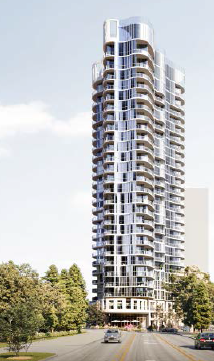 Might work in Mississauga – not wanted in Burlington. The re-write of portion of the Official Plan is taking place – with the Planning staff trying every idea out there to involve the citizens.
Some stunning developments have been brought forward; all of which would be embraced quickly by Mississauga – but Burlington is not Mississauga.
Council has to come to terms with wanting to do everything and what fiscal reality will permit. There are only so many Reserve funds that can be raided.
At this point council deserves to be told publicly that we appreciate what they are trying to do and wish them well as they enter their second year of their four year term.
A closer review however is merited.
The day Meed Ward let the outgoing council have it right between the eyes.
Salt with Pepper is the musings, reflections and opinions of the publisher of the Burlington Gazette, an online newspaper that was formed in 2010 and is a member of the National Newsmedia Council.

 By Pepper Parr By Pepper Parr
December 3rd, 2019
BURLINGTON, ON
Monday was a long day, a very long day for the seven members of city council and the city manager who had to sit through it all. Various Staff came and went as Council worked its way through a heavy agenda.
The debate on the Climate Action Plan was robust; the debate on the Private Tree Bylaw was divisive; the debate on the Leash Free space to exercise dogs was instructive – we just might see some creative solutions on this one.
 Is leaf collection a service the city should continue to offer? At some point the citizens of the city just might learn where the screw up on the leaf collection problem was and who is responsible. Weather was certainly an issue – the real problem was Staff effectively and professionally informing members of council and the public. Angelo B saying it was a lesson learned just doesn’t cut it.
The debate made it clear that Burlington has to find a solution to the leaf collection that is financially sound.
The city is now at the point where it can begin the creation of a Memorandum of Understanding with all four school boards that will lead to a formula for free transit use for high school students. It is complex and will take some serious negotiation.
It was an issue that Mayor Meed Ward brought to Council and she expected to be the lead on the issue.
 She won the election – she is the Mayor. 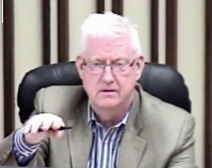 Councillor Sharman: A course correction needed. Ward 5 Councillor Paul Sharman wasn’t comfortable with that – he wanted the report to come from Staff rather than the Mayor. City Manager Tim Commisso said he would have the report come from his office.
The battles’ that plagued the 2006 and the 2010 councils have not ended. Sharman is still dogging Meed Ward – this time he is alone and no longer has former Councillor Rick Craven supporting his efforts to reign in Meed Ward whenever they could.
Meed Ward won the election, she is the Mayor. Councillor Sharman has to come to terms with that fact.
Today, Tuesday December 3rd is the first anniversary of this Council being sworn in – a good opportunity for Sharman to complete the psychological adjustment he has to make.

 By Staff By Staff
December 2nd, 2019
BURLINGTON, ON
The re-building of a political party is, an at times, slow process.
 Kathleen Wynne led the Liberals into a devastating loss – didn’t win enough seats to be recognized as a political party. Power, or what is left of what a political party had before it went down to defeat is up for grabs.
That is the process the Ontario Liberals are going through this month.
They are about to elect who their new leader is going to be.
Today – at 6 pm, is the deadline for Liberals to renew their memberships and be eligible to vote for the next leader and to take part in some of the policy decision deliberations.
The Liberals have seven seats in the 124 seat legislature.
The Progressive Conservatives form the government which is not all that popular. The Liberals have at least two years to re-grow and create policies that will be needed to win.
The leadership candidates are:
- Michael Coteau
- Steven Del Duca
- Kate Graham
- Brenda Hollingsworth
- Mitzie Hunter
- Alvin Tedjo
Brenda Hollingsworth recently submitted a complete nomination package and we are now commencing the Party’s official green-lighting process with her. The other candidates have been previously greenlit and are fully registered.
The Ontario Liberals will select their leader on March 7th.

 By Staff By Staff
December 2nd, 2019
BURLINGTON, ON
The notice was brief, to the point and for some really disappointing.
The weather was foul and there were not going to be that many people lining New Street waiting for the floats to pass by.
The city posted a notice:
It is with great disappointment that the Santa Claus Parade is cancelled due to the declaration of a weather event and unsafe weather conditions. Public safety is our #1 priority. Unfortunately the parade cannot be rescheduled due to the massive amount of scheduling to coordinate 90 floats and road closures. We encourage all residents to please avoid any unnecessary travel until weather conditions improve.
No mention of any refunds for those people who paid healthy fees to participate in the parade.
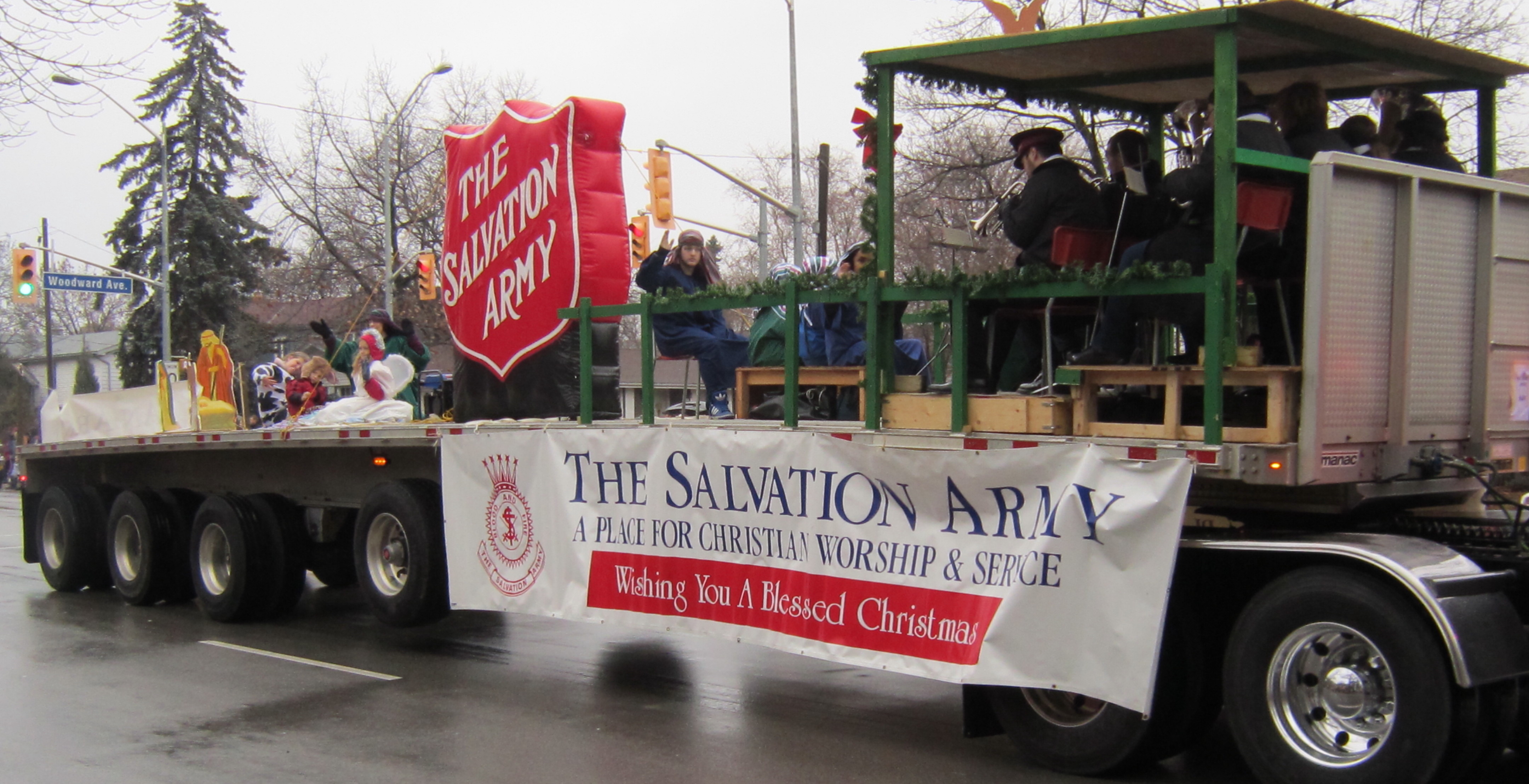 The Salvation Army is there for the good times and during the hard times. The parade was one of the Good Times. 
 By Staff By Staff
November 30th, 2019
BURLINGTON, ON
 Conservation Halton advises of a winter weather system that will move through the jurisdiction late tonight and continue Sunday bringing a mixture of freezing rain, ice pellets and snow. Conservation Halton advises of a winter weather system that will move through the jurisdiction late tonight and continue Sunday bringing a mixture of freezing rain, ice pellets and snow.
 Winds from the east pounding the shoreline. Sustained easterly shore bound winds may exceed 50km/hr with wind gusts over 80 km/hr by early Sunday morning resulting in potential wave heights in the order of 2 to 3 meters along Lake Ontario shoreline areas.
Conservation Halton is asking all residents and children to exercise caution around Lake Ontario shoreline areas. Poor weather conditions combined with cold water temperatures and potential for waves to overtop breakwalls and other shoreline structures continue to make these locations extremely dangerous.
This Flood Outlook – Lake Ontario Shoreline message will remain in effect until Monday December 2nd
Conservation Halton will continue to monitor local weather and Lake Ontario shoreline conditions closely and will either terminate this message or issue further updates as necessary.

 By Pepper Parr By Pepper Parr
November 30th, 2019
BURLINGTON, ON
Each term the Mayor sets out who she wants to serve as Chair of the various Standing Committees.
The choices have to be approved by Council with each Council member being asked by the Clerk if they will accept the appointment.
The time around the structure of the Standing Committees have been changed. The new committee names and the recommended appointments are shown below. There are some surprises.
In her recommendations Mayor Meed Ward said: “After careful consideration of skills, experience, priorities and exposure, as well as seeking input from each Councillor, the recommended new Chairs/Vice Chairs for the new committees is as follows:
EICS: Environment, Infrastructure & Community Services Committee
Chair: Kelvin Galbraith Vice Chair: Lisa Kearns
CPRM: Community Planning, Regulation & Mobility Committee; AND CPM: Statutory Public Meeting
Chair: Shawna Stolte Vice Chair: Rory Nisan
CSSRA: Corporate Services, Strategy, Risk and Accountability Committee (includes Budget special meetings)
Chair: Rory Nisan, Vice Chair: Paul Sharman
Council Workshop:
Chair: Angelo Bentivegna Vice Chair: Lisa Kearns
Audit:
Chair: To be determined by Audit
Vice-Chair: To be determined by Audit
 Mayor Meed Ward has put forward the Committee chairs she would like to see in place. Mayor Meed Ward said: “The Deputy Mayor rotation will undergo some changes; the Procedural Bylaw has to be amended to permit chairs to serve in the Deputy Mayor rotation.
“The chair and vice chair of council standing committees rotates annually according to calendar year. Typically, the vice chair of the committee moves into the chair role, and the chair rotates off; however, with the recent reorganization, an additional standing committee has been added. This will mean that all members of council are either a chair or vice chair, and some will have more than one role.
“Chairs can’t be a deputy mayor, according to our current procedure bylaw. We will need to modify that part of our procedure to better distribute the deputy mayor role among more council members.
“Currently the deputy mayor role is on a one-month rotation, which can lead to confusion as to who’s on deck. During this term, I will be bringing forward a report providing better definition of, and outlining an enhanced role for, the deputy mayor. In the short term, I am recommending the role rotate quarterly, and that two deputy mayors serve each quarter, to provide additional backup for the mayor and opportunity to Councillors.
Q1:
Kelvin Galbraith and Angelo Bentivegna
Q2:
Lisa Kearns and Shawna Stolte
Q3:
Rory Nisan and Paul Sharman
Q4:
Angelo Bentivegna and Kelvin Galbraith
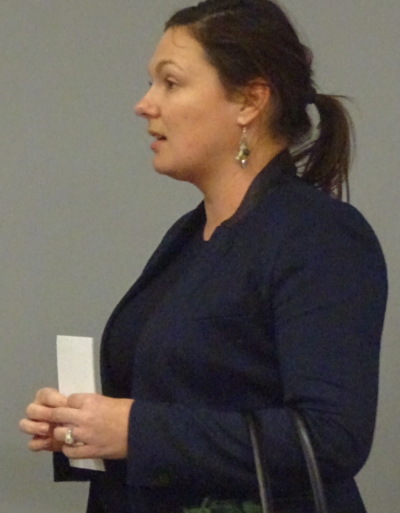 Lisa Kearns – vice chair 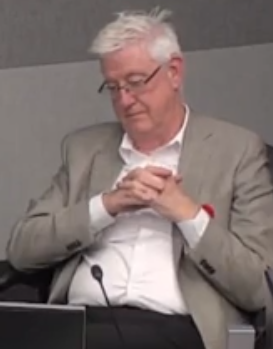 Paul Sharman  Lisa Kearns who handled a very full and complex series of meetings did particularly well; it seems odd that she is not the Chair of any of the Standing Committee – she is the Vice Chair of one. Same applies to Paul Sharman. Both he and Kearns were strong chairs able to handle complex situations. Lisa Kearns who handled a very full and complex series of meetings did particularly well; it seems odd that she is not the Chair of any of the Standing Committee – she is the Vice Chair of one. Same applies to Paul Sharman. Both he and Kearns were strong chairs able to handle complex situations.
The Mayor may have decided to give the other Councillors some needed exposure at being fully responsible.
Kelvin Galbraith, Shawna Stolte and Rory Nisan are to be appointed chairs.
The City is going into a very difficult phase with an Official Plan that has to be finalized, an Interim Control Bylaw that as to be lifted and a budget that is going to require more from the taxpayer than last year. Add to that some very controversial developments that are going to come before them.
The role of Deputy Mayor has been a wasted opportunity in the past. Expect the Mayor to take some bold steps and put others out on the streets and at major events. Kudos for Meed Ward taking that step.
We can’t wait to see Angelo Bentivegna serving as the Deputy Mayor.

 By Staff By Staff
November 30th, 2019
BURLINGTON, ON
The City has begun the installation of the new floating wave break at the LaSalle Park Community Marina. The new wave break will provide better protection for the boats, docks and public who use the marina. The current wave break is at its structural end of life and does not provide adequate protection against larger waves from storms.
 The sailors had to learn to share the space with the swans and public had to learn to stop feeding the swans. 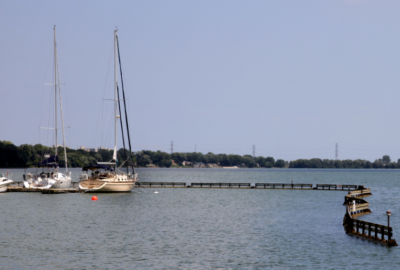 The belief (hope?) is that the new wave break will prevent the damage boat owners have experienced in the past. Construction will begin Dec. 2, 2019. During the installation, the marina parking lot will be used for housing the construction equipment and materials. Parking at the marina will be limited. To ensure public safety, when the wave breaks and other materials are delivered to the area, there will be no public access to the parking lot during delivery. Visitors are advised to use the parking in the upper lots at LaSalle Park; the marina area is accessible from the park.
The Marina has 219 docking spaces and is protected by a floating wave break. The Burlington Sailing and Boating Club and the Able Sail program offer sailing programs at the Marina. In addition, the City has a public boat launch at the Marina that is protected by the floating wave break.
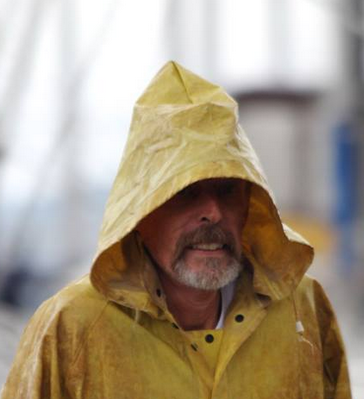 Former LPMA President John Birch The decision to install a new wave break was contentious; the debate ranged back and forth for a number of years. The issue was whether or not to build a permanent wave break that was expensive and thought to intrude on the habitat of the Trumpeter Swans who had taken up residence in the park. The city opted for a wave break that is expected to last twenty years.
City Council decided to put up the needed funds and drew down dollars from the Hydro Reserve fund to pay for the $4 million cost.
In the process the President of the LPMA, John Birch, lost his job.

 By Ray Rivers By Ray Rivers
November 30th, 2019
BURLINGTON, ON
Today it’s just a small group of young folks, one only 12 years old, taking the provincial government to court under Section 7 of the Canadian Charter of Rights and Freedoms, which promises protection for life, liberty and security of the person. Yet, according to the science, they more than the 55 year old Mr. Ford, will suffer “widespread illness and death” because of the policies of this provincial government.
 Doug Ford: cancelled virtually all of the positive environmental policies of the previous government, as if the environment is a partisan issue. Even the federal government, which had pioneered a number of progressive climate measures, including the carbon tax, is being sued (by another group of young Canadians) for not doing enough. But Mr. Ford’s government is clearly culpable – having actually cancelled virtually all of the positive environmental policies of the previous government, as if the environment is a partisan issue and he needed to show he was different. So it’s as if Mr. Ford deliberately provoked this kind of reaction, the first such legal action against a provincial government.
Ford slashed the province’s carbon emissions reduction targets. He is suing the federal government at the Supreme Court over a carbon tax, imposed only after he cancelled the province’s own cap-and-trade carbon pricing program – the most cost effective way to reduce all of the peoples’ carbon footprints.
While taking credit for the results of the provincial innovative green energy program, which reduced Ontario’s climate damaging emissions by 22%, Ford has bragged about having shut down the program. Coal which was used to produce 25% of the province’s electricity in 2003 was phased out by 2015 and largely replaced by conservation, wind and solar power.
 Some see the wind turbines as a pleasant addition to a skyline But Mr. Ford doesn’t like the sight of wind generators, so he has killed some 800 renewable energy projects undergoing completion. It is costing a quarter billion dollars to cancel these investments. This action winds down the development of renewable energy in Ontario and with it the thousands of jobs already in the wind and solar industry. Canadian Solar, for example, used to be the third largest global solar manufacturer.
Mr. Ford has also declared war on electric vehicles, and reduced the pump price of gasoline, thus encouraging greater gasoline consumption. He ended the provincial electric vehicle (EV) incentive program and killed the program of installing EV charging stations across the province.
Mr. Ford says he believes in climate change and has a plan to deal with it, but that is clearly rubbish. Just ask those young people suing him or all the people in this province who voted federally for political parties supporting the carbon tax.
And this goes beyond climate change. In 2005 Ontario issued 15 smog advisories covering 53 days, due in large part to pollution from Ontario’s coal-fired electricity. An independent study estimated the health, financial and environmental costs of that pollution at $4.4 billion a year. More recent studies have shown that exposure to nanoparticles emitted in automobile and truck exhaust fumes can also lead to a number of health effects including a rising number of cases of brain cancer.
 This is not the way to determine who governs us. Litigation is today’s new democracy. As we’ve previously discussed in this column, the inadequacies of our first-past-the-post electoral system cry out for electoral reform. In the absence of that reform we have to rely on the courts to ensure politicians listen to the people between elections. So we should expect more legal action – individuals suing government and governments in turn suing industry to recover the costs of the health care and environmental damage and costs they cause.
Current emphasis on environmental litigation has been likened to what has happened with the tobacco industry. Those damage law suits were less about the fact that cigarettes are addictive and cause cancer and heart disease, but that the companies knew all of this and misled or withheld it from the public and public health authorities.
There is substantial evidence that oil company researchers and executives understood that the ongoing expansion of petroleum consumption would lead to irreversible global warming. Not only did they fail to inform the public but deliberately misled all of us. And isn’t the imperilment of the planet’s climate a crime for which no punishment is too harsh.
 Another voice, Canada’s Ecofiscal Commission, recently concurred with other experts that its analysis demonstrates that carbon pricing is the most cost-effective way for the country to hit its 2030 Paris emission targets. Of course they argue that the price would need to rise to $210 per tonne compared to $30 today. And then former Ontario Liberal environment minister Glenn Murray, who introduced Ontario’s cap and trade carbon pricing program, now believes that it is too late, even for a carbon tax to be effective. Another voice, Canada’s Ecofiscal Commission, recently concurred with other experts that its analysis demonstrates that carbon pricing is the most cost-effective way for the country to hit its 2030 Paris emission targets. Of course they argue that the price would need to rise to $210 per tonne compared to $30 today. And then former Ontario Liberal environment minister Glenn Murray, who introduced Ontario’s cap and trade carbon pricing program, now believes that it is too late, even for a carbon tax to be effective.
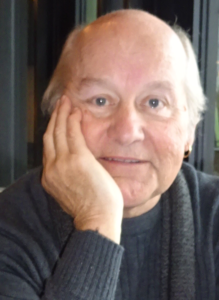 Ray Rivers writes regularly on both federal and provincial politics, applying his more than 25 years as a federal bureaucrat to his thinking. Rivers was once a candidate for provincial office in Burlington. He was the founder of the Burlington citizen committee on sustainability at a time when climate warming was a hotly debated subject. Ray has a post graduate degree in economics that he earned at the University of Ottawa. Tweet @rayzrivers Ray Rivers writes regularly on both federal and provincial politics, applying his more than 25 years as a federal bureaucrat to his thinking. Rivers was once a candidate for provincial office in Burlington. He was the founder of the Burlington citizen committee on sustainability at a time when climate warming was a hotly debated subject. Ray has a post graduate degree in economics that he earned at the University of Ottawa. Tweet @rayzrivers
Background links:
Youth Legal Challenge – Ontario Coal – Wind energy –
Air Pollution – More Air Pollution – Canadian Solar –
Car Culture – Oil Legal Cases – More Oil Legal –
Carbon Tax Too Late –

 By Pepper Parr By Pepper Parr
November 28th, 2019
BURLINGTON, ON
Students were arriving at the Mattamy Velodrome in Milton Friday by the busload from every public high school in the Region.
They were there to look at some of the educational opportunities available to them once they have completed high school.
 1500 students from public high schools throughout the Region took part in an opportunity to see what their educational futures might look like. A total of 1500 students were expected to go through two hour sessions looking at the offerings at community colleges and opportunities in both the public and the private sectors.
The exhibits filled the oval of the velodrome, which from time to time, had cyclists speeding around on the track.
The Halton Pathways: A Future that Fits program is designed to give students as many opportunities as possible to decide what they want to do in the way of work once they have completed their education.
 Burlington’s Nelson High School pitching their SHSM program. Several of the Community Colleges were on hand with representatives who could talk about various programs, at least one university was represented. The Regional Police had equipment on the site.
Part of the Pathways program is the Specialist High Skills Major (SHSM).
SHSM programs allow students to specialize their education around their chosen field of interest. Each SHSM program includes a bundle of 8-10 Grade 11 and 12 courses related to that area of interest.
Grade 11 and 12 students choose a major sector area such as:
 Superintendent Julie Hunt Gibbons. Business, construction, arts and culture, energy, environment, information and communications technology, justice, community safety and emergency services, health and wellness, horticulture and landscaping, social justice, sports, transportation, manufacturing, hospitality and tourism.
The opportunity to specialize will result in notations on their report cards that often leads to a job as soon as they graduate because they have marketable skills.
Julie Hunt Gibbons, Superintendent of Education responsible for Secondary curriculum and school program, Student success and pathways destinations, Elementary schools: Brookdale, Eastview, Gladys Speers, Oakwood, Pine Grove, WH Morden and TA Blakelock High School.

 By Pepper Parr By Pepper Parr
November 28th, 2019
BURLINGTON, ON
It is amazing what can be done by a Mayor when they decide something has to be done.
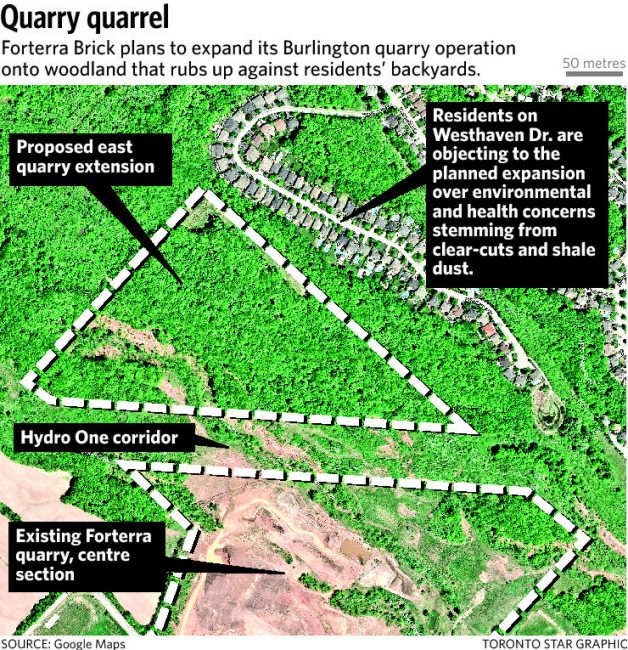
The Meridian Brick operation on King Road has been a threat to the Tyandaga Community. They organized as TEC and raised tens of thousands to hire people who they believed could help them stop the quarrying that was going to take place for years close to their small back yards.
The previous council looked at the issue, said the quarry had a license to do what they wanted to do, shrugged their shoulders and let it go.
The Tyandaga residents were not prepared to give up.
They had worked with then Ward 2 Councillor Marianne Meed Ward who was elected Mayor in October of 2018.
On Tuesday of next week she will formally introduce several Staff Directions.
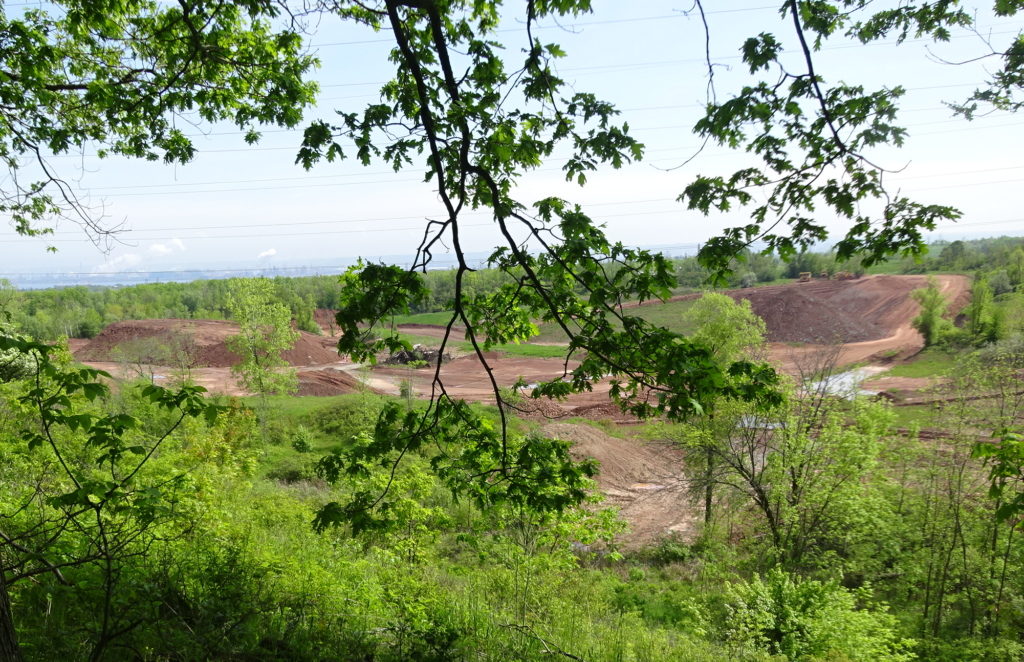 The quarries as seen from the back yards of the West Haven residences. Direct the Executive Director of Community Planning, Regulation and Mobility to investigate the Air Quality Bylaw for Oakville and report back to council with a recommendation for a similar bylaw for Burlington by Q2 2020; and
Direct the Executive Director of Legal Services and Corporation Counsel to retain an environmental lawyer to advise on the municipal role in the Aldershot Quarry, the potential air quality bylaw and any other matters arising; and
Direct the Executive Director of Community Planning, Regulation and Mobility to review and report back on the peer reviews of the studies done by Meridian/Aldershot Quarry and requirements for ongoing monitoring and potential impacts on human health. As part of the review, report back on the cost and process to conduct an independent peer review of studies conducted to date; and
Direct the Director of Roads, Parks and Forestry to review the forestry plan for phased removal and replacement of trees at the Aldershot Quarry, and report back with an assessment to council in Q2 2020; and
Direct the Mayor to:
• write to the three local MPPs for Burlington, the Ministry of the Environment, Conservation and Parks, and the Ministry of Natural Resources & Forestry to request a meeting to discuss the conditions of the site plan and their oversight and due diligence in ongoing monitoring and studies conducted on the air quality impacts of the quarry activities to ensure the quarry is operating within provincial regulations.
• establish a Community Council Liaison Committee with representation from Meridian/Aldershot Quarry, local citizens, provincial ministries, city staff and council, and other stakeholders (as identified below), to provide regular communication among stakeholders, renew monitoring studies, and discuss quarry activities and any emerging/new issues.
 Bricks ready to be delivered. What a difference a Mayor makes.
The background on all this:
Meridian/Aldershot Quarry operates in the city of Burlington off King Road, north of North Service Road. The quarry is governed by both a provincially approved license and a site plan. The license was issued in 1972.
In 2010, a revised site plan was approved by the Ministry of Natural Resources and Forestry. The site plan spells out certain provincial conditions that must be met to continue operations.
Meridian Brick purchased the Aldershot Quarry in 1990. In 1998, the Tyandaga West subdivision, including what is now Westhaven Drive, was approved by the then-Ontario Municipal Board (OMB). The OMB-endorsed Minutes of Settlement included conditions for the plan of subdivision regarding ongoing monitoring of dust and noise, which were met prior to the issuance of building permits.
The west and centre cells of the Quarry are almost depleted, so Aldershot/Meridian Brick is now moving into the east cell, closer to the homes on Westhaven Drive.
Residents on Westhaven Drive, along with the broader Tyandaga community and beyond, formed the Tyandaga Environmental Coalition (TEC) and have raised concerns about the impact on human health from dust from the quarry. Additional concerns have been raised regarding loss of tree canopy and noise. Residents have asked whether the decades-old license would be granted today, or the subdivision approved today in such close proximity, given up-to-date information about the environment and potential impact of quarries in close proximity to residential neighbourhoods.
TEC is advocating for three actions related to the quarry:
1. Endorse TEC’s proposed Minister’s Zoning Order and Request for Review to allow for the permanent protection of the site, or at the very least the required three-year salamander survey work;
2. Seek, along with the Halton Medical Officer of Health, independent peer reviews of all Meridian’s technical studies, and
3. Commission a Stakeholder Design Charette exercise to explore sustainable rehabilitation and development solutions across the entire Aldershot quarry operation.
Requesting an MZO of the province would depend on the findings of the review of studies and ongoing monitoring requirements and oversight of the site. TEC has advised they have information about salamanders in the vicinity; we have requested they forward that information.
The city has recently taken the position with the proposed expansion of the Nelson Quarry that any post-use design discussion will not commence till the site is decommissioned; the same approach will be taken with the Tyandaga quarry.
There is merit in reviewing the studies that have been conducted, and the ongoing requirements for monitoring and provincial oversight.
In June of this year, myself and Ward 1 Councillor Kelvin Galbraith met with TEC members Fran Fendelet, Heather Lareau, Maria Rozakis Adcock and their consultant Dr. Franco DiGiovanni.
Mr. DiGiovanni is an expert in air quality, is often called on to testify at hearings (most recently on the proposed Milton CN logistics hub), and currently works for Hemmera, a leading environmental consultancy.
A number of issues were identified and shared by Dr. DiGiovanni regarding the quality of the studies conducted by Meridian Brick/Aldershot Quarry, and the nature of the peer review work that was completed, specifically:
– not conducted by a licensed engineer practitioner
– some contaminants were not examined
– unclear how Meridian is held accountable for ongoing monitoring
The issues raised by TEC, Dr. DiGiovanni, and citizens regarding the nature and quality of the studies done to date warrant the city taking a deeper look at the quarry activities, the ongoing monitoring, and the oversight provided by the province.
Former Mayor Rick Goldring and Councillor Rick Craven must be shaking their heads: they did nothing.

 By Pepper Parr By Pepper Parr
November 29th, 2019
BURLINGTON, ON
Looks like things will get a little boisterous during the early part of December,
There are three Standing Committee meetings the week of December 2nd at which some contentious issues are going to be heard.
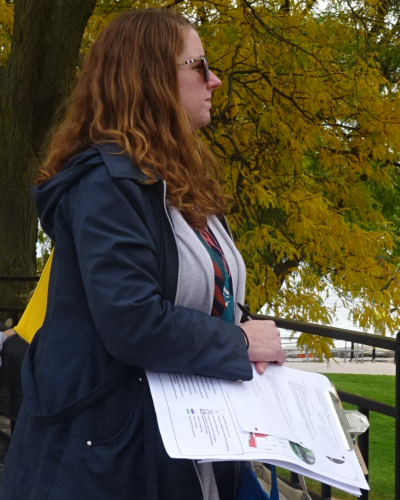 Alison Enns, lead planner on the Taking a Closer Look Walking Tour 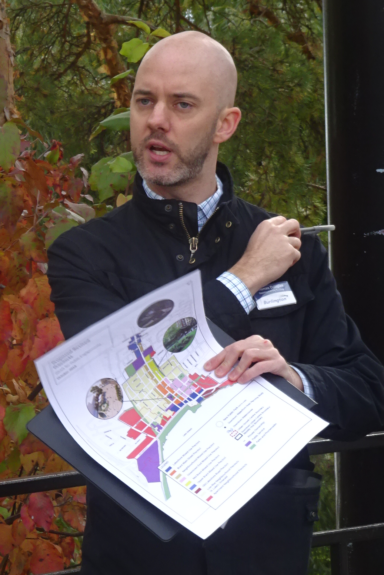 City Planner explaining some of the locations during a Walking Tour. The Taking a Closer Look at Downtown report that will be presented has a number of people disappointed with what the Planning team is bringing forward – they intend to delegate.
The Gazette is aware of two people – with several others wanting a little more time to think about what they want to say, registered to delegate. The report that is going to council is lengthy and at times confusing.
Alison Enns and another planner led a small group on a Walking Tour to gather thoughts and opinions from people and to answer questions. The two were quite keen and listened intently – there were a few points where they didn’t have much in the way of background on other developments in the area – the Bridgewater being a development where they didn’t want to say a word. What the public saw were two planners trying very hard to understand what people had to say.
 The council meeting was originally intended as a Committee of the Whole, a process that does not permit delegations. The complaints about that decision were close to visceral. For reasons that still aren’t understood the Clerk’s Office vacillated between ‘it would be a COW and then it would be a Standing Committee’. Some thought that concern was over people wanting to delegate which would take up much of the time. It certainly will – delegations are for as much as ten minutes and then as much as an additional ten minutes when the seven members of council ask follow up questions of the delegator. The council meeting was originally intended as a Committee of the Whole, a process that does not permit delegations. The complaints about that decision were close to visceral. For reasons that still aren’t understood the Clerk’s Office vacillated between ‘it would be a COW and then it would be a Standing Committee’. Some thought that concern was over people wanting to delegate which would take up much of the time. It certainly will – delegations are for as much as ten minutes and then as much as an additional ten minutes when the seven members of council ask follow up questions of the delegator.
This is the elected listening to the electors, folks; the reason we all stood out in the cold on Remembrance Day.
The point is – there will be delegations which we thought was the reason this council wanted to serve the public – so they could listen to them.
There is some concern as well over the report the Mayor will be making on her trip to Japan – the amount spent is thought to be over what was budgeted. We cover that in a different story.

 By Staff By Staff
November 28th, 2019
BURLINGTON, ON
Police rely heavily on finger prints and DNA as evidence in identifying a suspect and attaching them to a crime.
Footprints are not something police usually rely upon.
That changed for the Halton Regional Police Service officers who very much wanted to capture two people who had left distinguishing foot prints at crime scenes
Police arrested two people after a series of residential break and enters dating back to January, 2019 in Burlington. The unique shoe impressions that were identified at the scene of multiple entries and some solid detective work led to the arrest of:
Joseph Allen (49) of Hamilton has been charged with break and enter (x14).
Carol Brown (69) of Hamilton has been charged with break and enter (x14).
The suspects of these break and enters came to be referred to as the ‘Under Armour Bandit’ because of the foot wear.
Both accused were arrested on Saturday, November 23; after investigators executed two search warrants at residences in Hamilton police were able to recover property that is believed to have been stolen from the break and enters.
“If you are a victim of a residential break-in that took place in Burlington between the dates of October 2018 and November 2019 please click the link to review the photos on our Flickr account.
   “If you are the rightful owner and can identify any of the property please contact us.” “If you are the rightful owner and can identify any of the property please contact us.”
The investigation is ongoing at this time and additional charges are expected to be laid. Anyone who may have additional information concerning this investigation is asked to contact Detective Constable Matt Spina of the 3 District Criminal Investigations Bureau at 905-825-4747 ext. 2338 or the 3 District Criminal Investigations Bureau general line at 905-825-4747 ext. 2316.
Tips can also be submitted to Crime Stoppers “See Something? Hear Something? Know Something? Contact Crime Stoppers” at 1-800-222-8477 (TIPS), or through the web at www.haltoncrimestoppers.ca.
Please be reminded that all persons charged are presumed innocent until proven guilty in a court of law.

 By Pepper Parr By Pepper Parr
November 28th, 2019
BURLINGTON, ON
“Just in case you haven’t seen it yet” wrote a Gazette reader, “that Japan trip cost us $31,161 for the six people who took it – quite a bit over the initial estimates, even by airfare and accommodations alone.
“I understand the significance of the anniversary, but this is a ridiculous cost that I as a Burlington resident am forced to pay. They went over there for five days with few working hours – an entire day at least was spent on things like a ‘soba noodle making experience’.
What value is that to the public back home? It sounds more like personal vacation time for the Mayor, Councillor Nisan, the City Manager and the Mundialization Committee members.
“I urge you to take a deeper dive into this – the report is available online, its item 4.6
 The Mayor and the City Manager went local while they were in Japan. The trip may well have been worth the photographs of the Mayor and the City Manager strutting through the streets of a Japanese community.
Here is what the Mayor will report on.


 By Staff By Staff
November 28th, 2019
BURLINGTON, ON
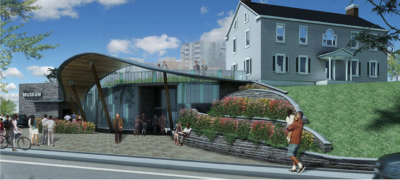 Transformed at a cost of close to $10 million – the museum is now open to the public. The Museum does have the name of the first citizen on the outside – but high school level entertainment is the feature currently.
The Joseph Brant Museum made the display of a collection of pin ball machines as the opening event for the expensively transformed museum.
There are two events that focus on the collection of pinball machines at the Museum.
 Balls & Beer Pinball Night takes place on Friday, December 13th, from 7 pm to 10 pm Balls & Beer Pinball Night takes place on Friday, December 13th, from 7 pm to 10 pm
Patrons can enjoy local craft beer and test their pinball skills at the Part of the Machine: Rock & Pinball exhibition on for a special night out at Joseph Brant Museum.
This event is licensed, you must be 19 years + to attend. Your ticket includes unlimited pinball play, 2 beer tickets, appetizers, a souvenir beer glass and there will be door prizes! $40/person. Tickets for the event.
 On December 21st, the Museum is hosting an IFPA sanctioned pinball tournament. You are expected to be a pinball wizard – the event is a friendly competition – all skill levels are welcome! On December 21st, the Museum is hosting an IFPA sanctioned pinball tournament. You are expected to be a pinball wizard – the event is a friendly competition – all skill levels are welcome!
Prizes will be given to the top 3 scorers. Sign up before December 14. Snacks provided. $25/person.
Guest host, Jeff Teolis from Pinball Profile will lead a fun night out at Joseph Brant Museum on – 5 to 9 pm. ALL skill levels are welcome. Players will be randomly assigned opponents and a pinball machine to play a match. This event is sanctioned by the IFPA (International Flipper Pinball Association).
Top scores will be posted on their website. Registration limited to 40 people, sign up before December 14.

 By Pepper Parr By Pepper Parr
November 27th, 2019
BURLINGTON, ON
The map below shows the boundaries of all the proposed precincts.
The focus of this article is the Mid Brant Precinct that includes the No Frills Plaza
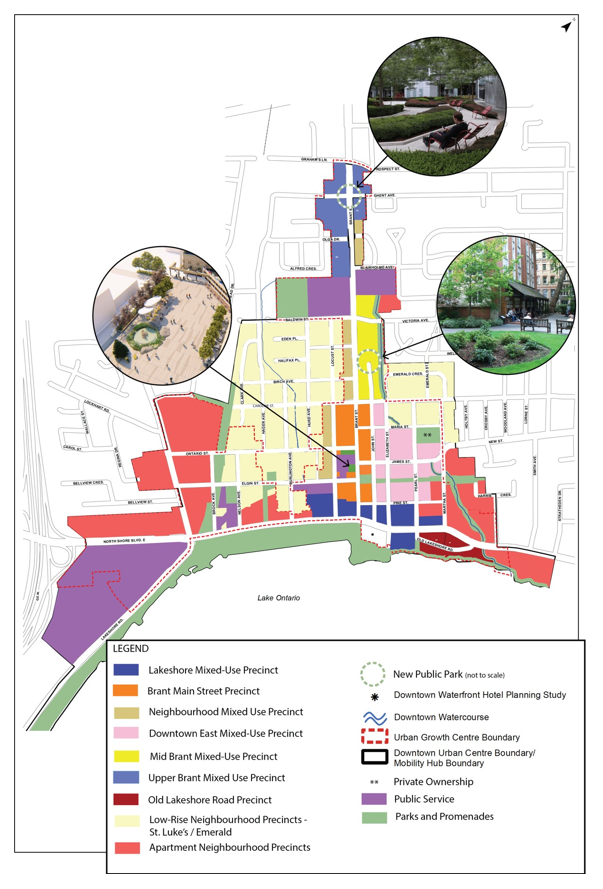 Map showing all the precinct boundaries The Mid Brant Precinct is located north of Caroline Street and south of the schools and contains the NoFrills plaza. It was created out of the Brant Main Street Precinct and Downtown Core Precinct of the Adopted OP.
Vision The Mid Brant Precinct will serve as a mixed-use neighbourhood containing a significant amount of retail space including servicing a food store function. The precinct will function as a major retail centre that serves the day-to-day and weekly shopping needs of Downtown residents.
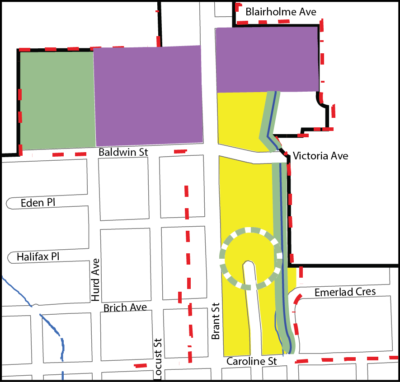 Map of the Mid Brant precinct. To support a walkable community the entire area must provide an accessible and attractive pedestrian environment with wide sidewalks, and greenway connections to adjacent residential neighbourhoods. Future development will also result in the filling of surface parking lots and the intensification of under-utilized buildings.
Brant Street will be enhanced as a Pedestrian Priority Street with wide sidewalks, bringing buildings close to the street and small urban squares adjacent to Brant Street. An increased buffer will be provided along Rambo creek with a walking trail along the west side of the Creek. A new public urban park will also be created.
Brant Street frontage will have a low-rise character.
The east side will allow for 3 storeys within the first 20 m. Beyond 20m, tall buildings are permitted.
Concept 1:
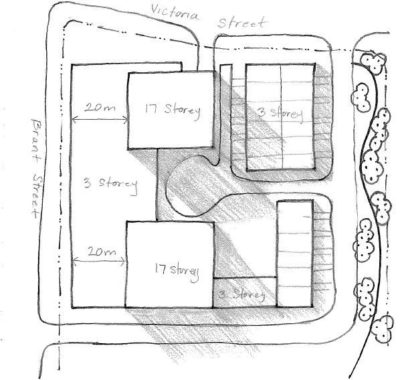
A proposed extension of John Street to Victoria is incorporated beside Rambo Creek, which provides increased separation to low-rise neighbourhoods.
A step down in height along the west side of the John Street extension will provide a transition from the existing neighborhood.
Brant Street frontage will have a low to mid-rise built form.
Adjacent to Brant Street, low to mid-rise built form will be permitted in the first block depth. In the second block depth, mid-rise buildings are permitted.
A proposed extension of John Street to Victoria is incorporated in the centre of this precinct.
A step down in height along the west side of Rambo Creek will provide a transition to the exiting neighborhood.
Additional green space and a trail will be required on the west side of the creek.
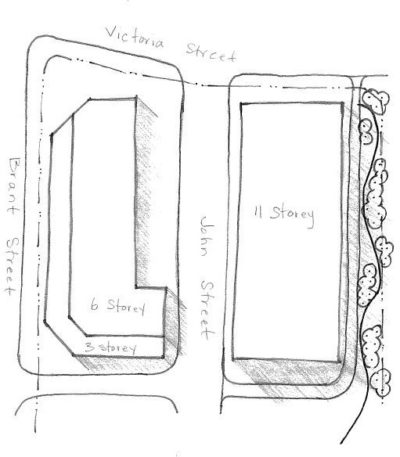 Concept 2. Concept 2.
This concept introduces a low-rise character to the Precinct which was not provided for in the Adopted Official Plan.
Includes a road extension of John Street to Victoria Avenue and requires transitional step-downs to the neighbouring precinct to the east which was not required previously.
Maintains low-rise character on Brant Street.
Tall buildings are permitted.
Additional green space and a trail will be required on the west side of the creek.
The concept introduces mid-rise buildings to the Precinct.
Includes a road extension of John Street to Victoria Avenue and requires transitional step-downs to neighbouring precinct to the east which was not required previously.
Allows mid-rise character on Brant Street.
As only mid-rise buildings are permitted, the block may not have a variety of built form.
Mid Brant is an area where re-development will likely occur.
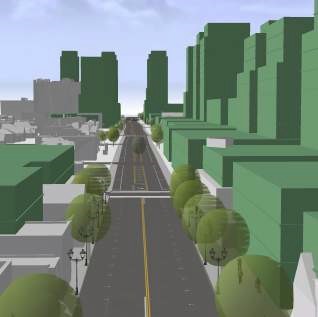 The Image above shows how 3 storeys are permitted within 20m of Brant and beyond that 17 storeys. The view is at Brant and Caroline looking north. The 3D Model Image above demonstrates the Mid Brant precinct where re-development will likely occur. The Image above shows how 3 storeys are permitted within 20m of Brant and beyond that 17 storeys. The view is at Brant and Caroline looking north. 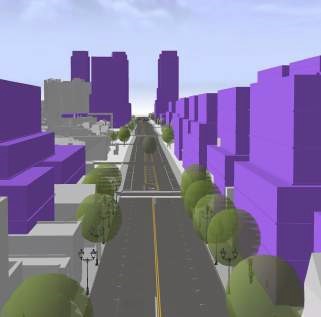 The 3D Model Image above demonstrates the Mid Brant is an area where re-development will likely occur. The Image above shows how mid-rise is permitted along Brant. The view is at Brant and Caroline looking north. The 3D Model Image above demonstrates the Mid Brant precinct where re-development will likely occur. The Image above shows how 3 storeys are permitted within 20m of Brant and beyond that 17 storeys. The view is at Brant and Caroline looking north.
During a walking tour of this precinct Planning staff elaborated on what some of their thinking was. There would be a pathway along the east edge of Rambo Creek with benches in place.
The supermarket would remain but parking would be underground and some park area in the center.
Where would Joe Dogs go?
Related articles:
The outline
The bigger picture.

 By Pepper Parr By Pepper Parr
November 27th, 2019
BURLINGTON, ON
The city’s Planning department is ready to take its first cut on what the downtown should look like. Council will review, discuss, debate and listen to delegations.
This article covers the available information on the Brant Main Street precinct.
While the overall vision for the Downtown remains the same, the Planning staff came up with two proposed concepts that are distinct and provide different ways in which to achieve the overall vision.
The two concepts are based on the revised Precincts. The development of the concepts is not starting from scratch. It was also necessary to take the following factors into account when developing the land use concepts: existing context; other related City policy; Provincial and Regional policy; and the directions given by Council for the re- examination including specifying 2031 as the planning horizon.
There are 11 precincts – two are administrative in nature – the others cover all of the downtown core.
Within each Precinct, there is an existing context of built and approved residential towers, office buildings and heritage buildings that is not anticipated to change before 2031 but which influences the character of the precinct.
The map below shows the location of all the precincts. More derail on the Brant Street Main precinct is below the ward boundary map.
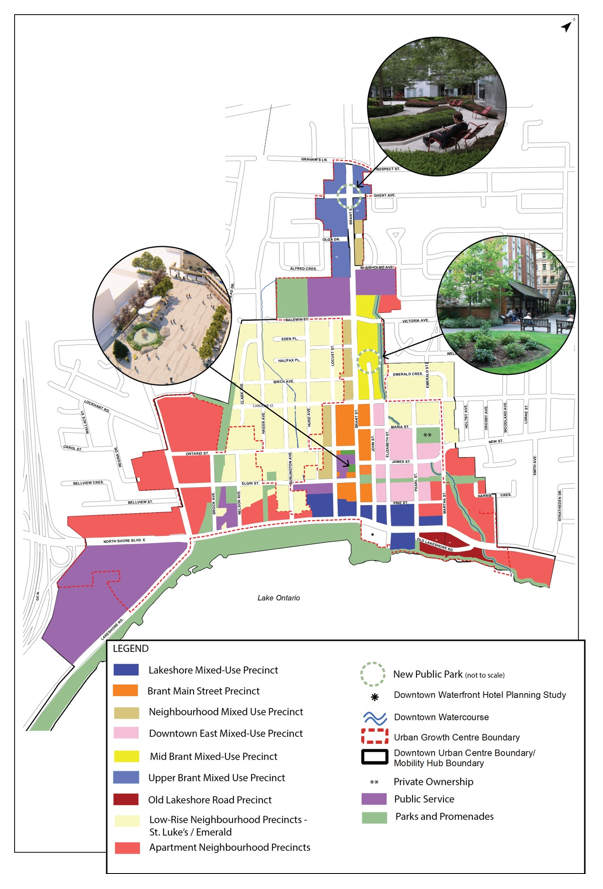
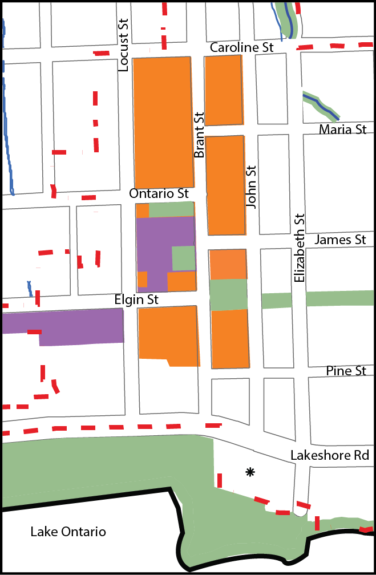 Brant Main Street Precinct applies to the portion of Brant Street that residents associate with the traditional downtown main street. Residents noted that the portion north of Caroline Street has a different character and it is now part of the Mid Brant Mixed-Use Precinct. Brant Main Street Precinct applies to the portion of Brant Street that residents associate with the traditional downtown main street. Residents noted that the portion north of Caroline Street has a different character and it is now part of the Mid Brant Mixed-Use Precinct.
Vision The Brant Main Street Precinct will serve as a unique destination within the Downtown and City-wide. It will be enhanced as a priority retail main street where the character of small retail shops lining the street is maintained.
Brant Street is identified as a Pedestrian Priority Street where the streetscape provides a safe and comfortable environment with Clear Path Zones and bump outs to narrow the distance to cross at key intersections.
A new large festival square, which is partially completed, will be located on the City parking lot between Brant and John Streets.
Permitted uses are primarily retail and service commercial uses on the ground floor with residential uses above.
Concept 1:
Brant Street will have a low-rise built form character.
Only low buildings will be permitted within the first 20 m. of Brant Street.
The remainder of these blocks adjacent to John Street and Locust Street will permit mid-rise buildings.
In addition to the overall Downtown vision, Concept 1 respects the low-rise built form character by permitting only up to 3 storey buildings along Lower Brant and parts of Lakeshore and extends it through Mid Brant.
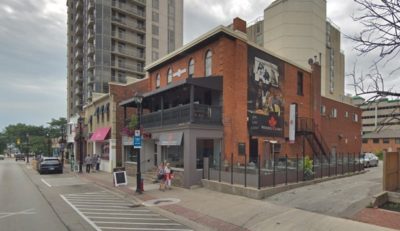 Concept 1 – would allow for taller buildings tucked in behind building that reflect the traditional Burlington. 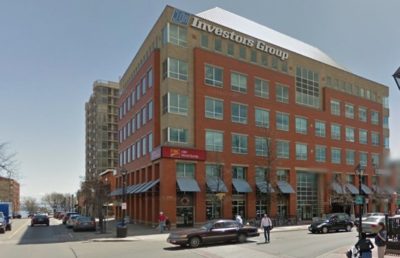 Concept 2: Image above represent a 6 storey Midrise building, an example of what could be built The low-rise permission provides an opportunity for greater number of existing buildings to be maintained along Brant Street, while any new low-rise buildings will allow for greater flexibility in store sizes and unique store fronts, which provides the ability to maintain the eclectic look and feel that creates the unique sense of place of Brant Street. Mid-rise buildings are directed to John Street and taller buildings are directed to precincts north of Caroline Street and within parts of the Downtown East Precinct north of the Elgin Promenade.
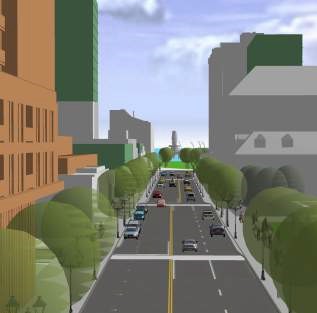 3D rendering of concept 1 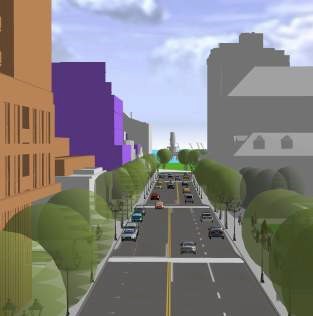 3D rendering of concept 2 When reference is made to categories of buildings (i.e., low-rise) the following summarizes the range of possible building heights for each building type:
• Low-rise: up to 3 storeys
• Low-mid Rise: 4 – 6 storeys
• Mid-rise: 7 – 11 storeys
• Tall: 12 + storeys
Pros and cons of concept 1.
The Concept is most similar to the Adopted OP requiring low rise-built form character at street level but with a greater setback of 20 metres to mid-rise buildings.
Maintains a maximum 3 storey low-rise character along Brant Street.
Twenty-metre-deep building podiums provide flexibility to maintain existing retail stores or accommodate new retail space.
Allows mid-rise along John Street and Locust Street.
Concept 2: Mid Rise – an opportunity for an increased pedestrian realm and open spaces.
In addition to the overall Downtown vision, Concept 2 provides for a renewal of the Downtown through a low-mid rise built form along Lower Brant and Mid Brant and mid- rise built form along parts of Lakeshore. This ‘in between’ scale of buildings provides a human scale, walkable public realm that will provide opportunities for future gathering places and open space, through potential additional setbacks and privately owned publicly accessible open spaces (POPS1) along the vibrant streetscapes.
The taller mid- rise buildings allow for wider sidewalks and more open space at the street through greater building setbacks. Taller buildings are directed to precincts north of Caroline Street and within the Downtown East Precinct.
Currently no maximum height is identified for Tall Buildings. Input received through the engagement process will be used to inform the evaluation and confirm a maximum Tall Building height for each Precinct to be included in the preliminary preferred Concept.
Pros and cons concept 2
Compared to the Adopted OP, this concept permits shorter mid-rise buildings without stepbacks.
No stepback is required resulting in the potential for a 6-storey building to be introduced on Brant street.
Apartment towers limit flexibility of retail space due to columns.
Permits low to mid-rise buildings.
Related news stories:
The Outline
The bigger picture.

 By Pepper Parr By Pepper Parr
November 27th, 2019
BURLINGTON, ON
Directly below is a map of all the precincts. Detail on the Lakeshore precinct is below this larger map.
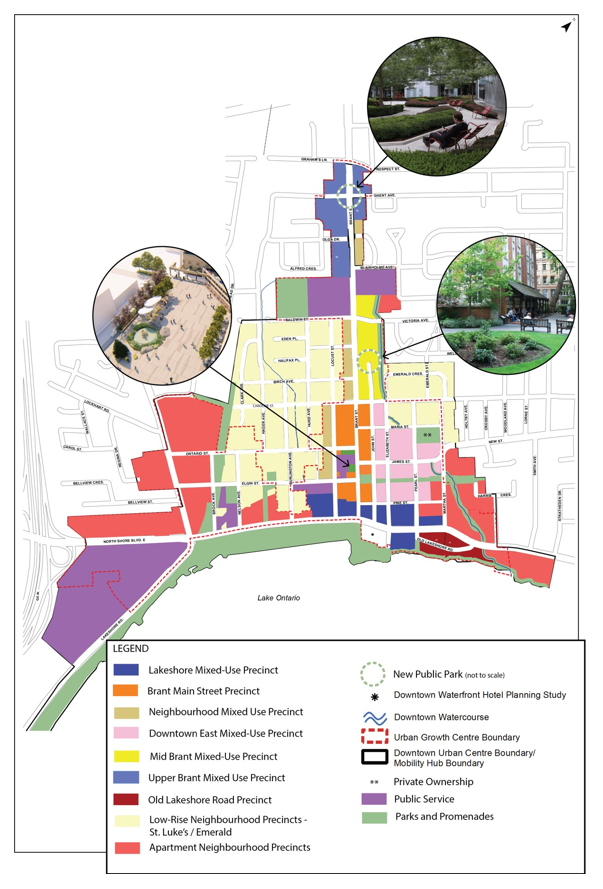
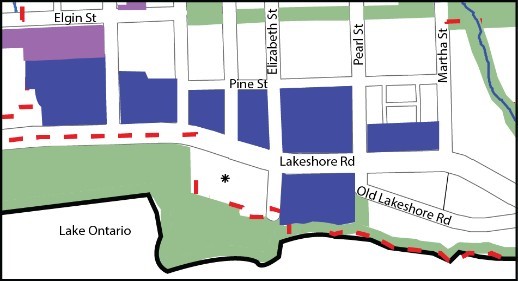 This area to many is the very heart of the city – directly across from Spencer Smith Park at the west end. All the land that has not been developed is in the hands of developers who have held it for some time. There will be a battle royal over what gets to be permitted. The Lakeshore Precinct is a new precinct which has been created out of the lower section of the previous Downtown Core Precinct in order to highlight the gateway nature of Lakeshore Road.
Vision: The Lakeshore Precinct will serve as the gateway to the Waterfront. This precinct will continue to develop as a priority retail main street particularly on the north side of Lakeshore Road. Permitted uses are primarily retail and service commercial uses on the ground floor with residential uses above. Lakeshore Road is identified as a Pedestrian Priority Street2 where the streetscape provides a safe and comfortable environment with Clear Path Zones3 and bump outs4 to narrow the distance to cross at key intersections.
The Precinct is largely developed with existing buildings ranging from 12 to 17 storeys on the north side of Lakeshore Road and one approved building of 26 storeys and with one site with permission up to 22 storeys on the south side of Lakeshore Road. Only parts of 4 blocks remain for redevelopment.
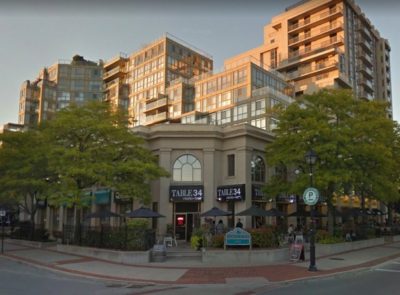 This is the kind of thing the Planners are putting forward as Concept 1 for this precinct. 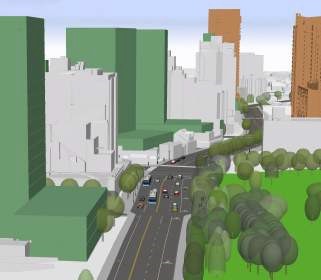 This is a 3D rendering of what the street will look like under Concept # 1
Concept 1:
On the remaining undeveloped blocks, a low-rise built form character will frame the street.
On the east side of Brant Street and north side of Lakeshore, only low-rise buildings will be permitted within the first 20 metres from Brant Street and Lakeshore Road.
On the remaining parts of these blocks tall buildings will be permitted.
Taller buildings will have a “slender” or point tower form with a maximum floor plate of 750m above the first 3 storeys.
Pros and cons for concept 1
Differs from the Adopted OP, which permits 12 to 17 storeys, by permitting only low-rise built form adjacent to the street with slender tall buildings being permitted 20 metres back from the street.
Maintains existing low rise-built form adjacent to the street and slender towers being set back from the low-rise towers.
Only 3 storey buildings permitted within 20 metres of Brant and Lakeshore.
Twenty metre depths provide flexibility to maintain existing retail stores or accommodate new retail space.
Tall buildings permitted in the back half of the blocks away from Brant / Lakeshore.
Concept 2
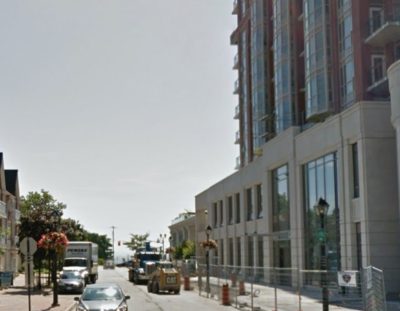 This is an example of what the streets would look like under concept # 2 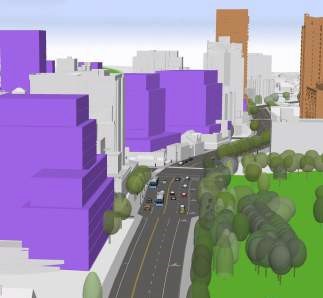 This is a 3d rendering of what the street might look like under concept 2 On the remaining undeveloped blocks, mid-rise buildings will be permitted.
Buildings that are mid-rise will incorporate a 3-storey podium with a minimum 3m setback.
Pros and cons for concept 2:
Differs from the Adopted OP, which permits 12 to 17 storeys, by lowering the height limit to a maximum of 11 storeys with a 3-storey podium.
Creates an opportunity for mid-rise built form by lowering the maximum building height to 11 storeys from 12 to 17 storeys.
To accommodate the lower density of mid- rise buildings, only a 3 m podium setback provided instead of the 20 metres.
Apartment towers may limit flexibility of retail space due to placement of structural columns.
On the remaining undeveloped blocks, a low-rise built form character will frame the street.
On the east side of Brant Street and north side of Lakeshore, only low-rise buildings will be permitted within the first 20 metres from Brant Street and Lakeshore Road.
On the remaining parts of these blocks tall buildings will be permitted
Taller buildings will have a “slender” or point tower form with a maximum floor plate of 750m above the first 3 storeys.
On the remaining undeveloped blocks, mid-rise buildings will be permitted.
Buildings that are mid-rise will incorporate a 3-storey podium with a minimum 3m setback.
Differs from the Adopted OP, which permits 12 to 17 storeys, by permitting only low-rise built form adjacent to the street with slender tall buildings being permitted 20 metres back from the street.
Maintains existing low rise-built form adjacent to the street and slender towers being set back from the low-rise towers.
Only 3 storey buildings permitted within 20 metres of Brant and Lakeshore.
Twenty metre depths provide flexibility to maintain existing retail stores or accommodate new retail space.
Tall buildings permitted in the back half of the blocks away from Brant / Lakeshore.
Differs from the Adopted OP, which
permits 12 to 17 storeys, by lowering the height limit to a maximum of 11 storeys with a 3-storey podium.
Creates an opportunity for mid-rise built form by lowering the maximum building height to 11 storeys from 12 to 17 storeys.
To accommodate the lower density of mid- rise buildings, only a 3 m podium setback provided instead of the 20 metres.
Apartment towers may limit flexibility of retail space due to placement of structural columns.
No tall buildings

|
|
 What did you buy on Black Friday?
What did you buy on Black Friday?


























































































